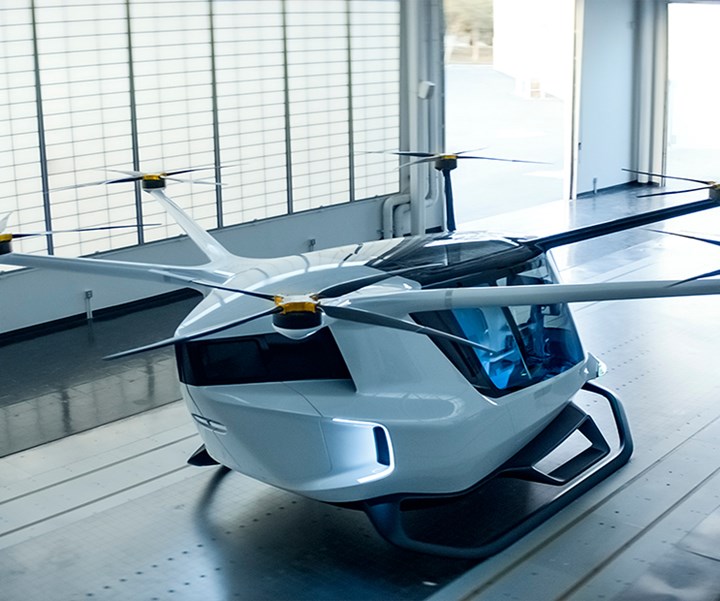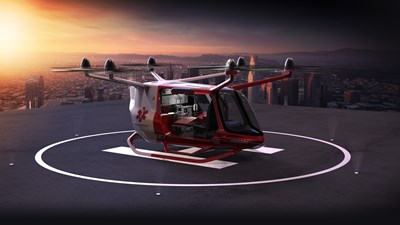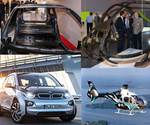Alaka’i Technologies launches hydrogen-powered eVTOL
Skai is a composite, five-passenger aircraft built by an air mobility startup and co-designed by BMW’s design group.

Source | Alaka’i Technologies
A Massachusetts startup recently unveiled an electric vertical takeoff and landing (eVTOL) vehicle powered by hydrogen fuel cells.
The Skai aircraft, developed by air mobility design and manufacturing company Alaka’i Technologies (Hopkinton, Mass., U.S.) features a carbon fiber composite airframe and landing skids, and is said to be the first eVTOL powered entirely by hydrogen fuel cells.
Co-designed by Designworks, the design innovation studio for the BMW Group, Skai’s design focuses on simplicity, safety and environmental sustainability. Other members of the development team include aerospace experts, engineers and pilots from NASA and other organizations.
Said to be 95% reusable and 99% recyclable, Skai’s hydrogen fuel cells emit only heat and water and enable Skai to travel further distances (up to 4 hours and about 400 miles) and carry a greater payload than aircraft with traditional fuel systems.
Alaka’i says it has initiated a test program for FAA certification.
“Skai offers practical, real-life solutions to everything from relieving traffic congestion to delivering supplies during natural disasters,” says Brian Morrison, co-founder, president and chief technology officer of Alaka’i Technologies.
“Skai is set to offer affordable, realistic applications in the commercial, private, freight, and personal air mobility markets,” Morrison adds.
The aircraft also features six electric motors, seats for up to five passengers, and the ability for autonomous piloting in future versions.

Applications of Skai are said to include air taxi travel as well as medical and cargo transport. Source | Alaka’i Technologies
“Our focus for this project was to help build a new consumer facing brand from scratch — considering and designing all touchpoints — digital, physical and service,” says Holger Hampf, president of Designworks. “And as a result, delivering an all-encompassing user-centric experience which is purposeful and highly desirable in all aspects.”
Read CW senior editor Ginger Gardiner’s blog on the future of carbon fiber in eVTOLs.
Related Content
-
TU Munich develops cuboidal conformable tanks using carbon fiber composites for increased hydrogen storage
Flat tank enabling standard platform for BEV and FCEV uses thermoplastic and thermoset composites, overwrapped skeleton design in pursuit of 25% more H2 storage.
-
McLaren celebrates 10 years of the McLaren P1 hybrid hypercar
Lightweight carbon fiber construction, Formula 1-inspired aerodynamics and high-performance hybrid powertrain technologies hallmark this hybrid vehicle, serve as a springboard for new race cars.
-
Welding is not bonding
Discussion of the issues in our understanding of thermoplastic composite welded structures and certification of the latest materials and welding technologies for future airframes.

.jpg;width=70;height=70;mode=crop)














